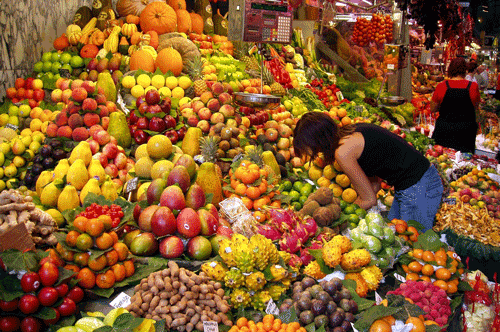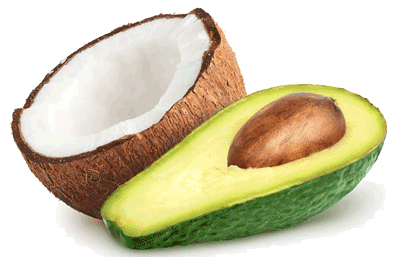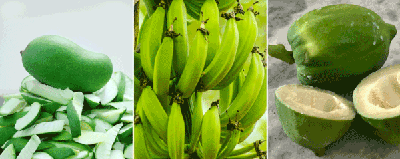
Are excessively sweet fruits sabotaging your health goals and what are the best fruits we can enjoy?
We are all genetically hot-wired to love fruits, there is no question about that. Our love for the juicy burst of sweetness needs to be respected in terms of its role in both health and disease. Not all fruits are created equally and some should only ever be eaten in small quantities, while others should be avoided entirely, such as packaged fruit juices.
Fruit was only eaten by our ancient ancestors during brief seasonal windows and it has played the role of natures candy to help us gain weight and store fat to see us through the lean seasons that followed, such as winter, dry seasons etc when fruit and food in general was scarce (don’t forget many of the animals we hunted in the past were also drawn seasonally to the same areas and fattened by the same fruits). Indeed, researchers have detailed the process by which sugars, and specifically fructose trigger weight gains and insulin resistance. The form of sugar used in the majority of processed foods in the United States, High Fructose Corn Syrup is seen as a major factor in the obesity epidemic being faced there.
 Today we have the full colour spectrum of the fruits of the world available on supermarket shelves all year round. Just like a kid in a candy store we now have so many choices of this supposed “health food”. Unfortunately, we've been tricked to believe that all fruit is good for health, even when it comes out of a packet and has added sugars, as these calories somehow do not apply because of the vitamins and minerals they contain.
Today we have the full colour spectrum of the fruits of the world available on supermarket shelves all year round. Just like a kid in a candy store we now have so many choices of this supposed “health food”. Unfortunately, we've been tricked to believe that all fruit is good for health, even when it comes out of a packet and has added sugars, as these calories somehow do not apply because of the vitamins and minerals they contain.
Fruits mainly contain a combination of fructose, glucose and sucrose with varying amounts of fiber, vitamins, minerals and other nutrients. The trick is knowing which fruits will support our individual health and which may be detrimental based on our current health history and health goals. Some fruits will cause a sharp rise in blood sugar and trigger an increase in appetite and weight gain while a select few mentioned below can have a satiating effect, reducing appetite, enhancing antioxidant status and supporting our intestinal microflora.
It is time to abandon the outdated belief that we can lump fruits and vegetables in the same health category when it comes to having our minimum “5 servings of fruits and vegetables”. On average, vegetables contain considerably less of the sugar content of fruits, have higher fiber and a broader spectrum of vitamins, minerals and phytonutrients. There are some vegetables, however such as potatoes that when cooked have an even higher sugar content than fruits, and should be limited in the same way.
Because of the high carbs in almost all fruits, many people who start following a ketogenic or low carb diet are advised to avoid most fruits entirely for the first few months while they activate their ability to burn fat rather than the normal reliance on burning sugar for energy. This is also true for anyone struggling with blood sugar and obesity issues, it’s best to avoid all fruits save for just a handful of the lowest in sugar until our health goals are attained. Anyone who monitors their ketones is recommended to test for themselves the effect after eating various fruits. Once metabolic flexibility has been achieved then it may be possible to increase the variety of fruits in one’s diet but keeping this within moderation will always be the key.
What are the best fruits we can enjoy?
The main component in fruits that slows or reduces the impact of the sugars on insulin production is the fiber content along with healthy oils and certain nutrients, such as vitamin C that creates the sourness in lemons and limes and other antioxidants. Indeed, some fruits are so “nutrient dense” with vitamins, minerals and powerful plant antioxidant compounds that they are generally considered safe to consume regularly. The top of this list are:
The top of this list are:
- The Coconut (although often classified as a nut).
- The Avocado.
- The berries: Blackberries, Blueberries, Strawberries and Raspberries.
- The sour fruits: Lemons, Limes and sour Grapefruits.

- Unripe Mango
- Green Banana / Green Plantain
- Unripe Papaya
Finally, you have a few others on the fringe that despite being higher in sugars than those given above may be enjoyed on occasion and provide specific nutritional value that makes them a healthy addition to our diet on special occasions:
- Kiwi fruits – high in nutrients and prebiotics
- Figs and Dates – high in fibre
- Apples – high in sugar but also high in fibre so an occasional treat
Based on the fruits mentioned here you can get an idea of what other fruits may also be acceptable and those that are best avoided. For example today we are tempted by more and more exotic "superfruits" from all the corners of the globe, such as Acai Berries from Brazil or Goji Berries from China and it is important to ensure that any new fruits you add to your diets are low glycemic and high nutrient as well as fresh, organically grown and unprocessed.
In summary
It is time to look beyond just the superficial perspective that all fruits are good because they contain vitamins and minerals. This does not mean that you cannot on occasion enjoy your favourite fruits that are not mentioned above, by all means do, but just be aware that there is a cascade effect on appetite and weight gain so it will pay dividends to your health to have them only on occasions and to limit portion sizes. As mentioned, be extra careful taking fruits in the form of juices, even freshly squeezed, as removing the fiber only increases the sugar rush and any beneficial effects of their nutrients is lost when 500ml of fruit juice can contain the same amount of sugar as a can of Coca Cola! While a healthy green smoothie can be a great way to start your day, try to keep as much of the fiber as possible and make vegetables the main ingredients with the addition of nutrient dense fruits like coconut and avocado.

Comments
Great article. Thanks.
What is the best food over 60?